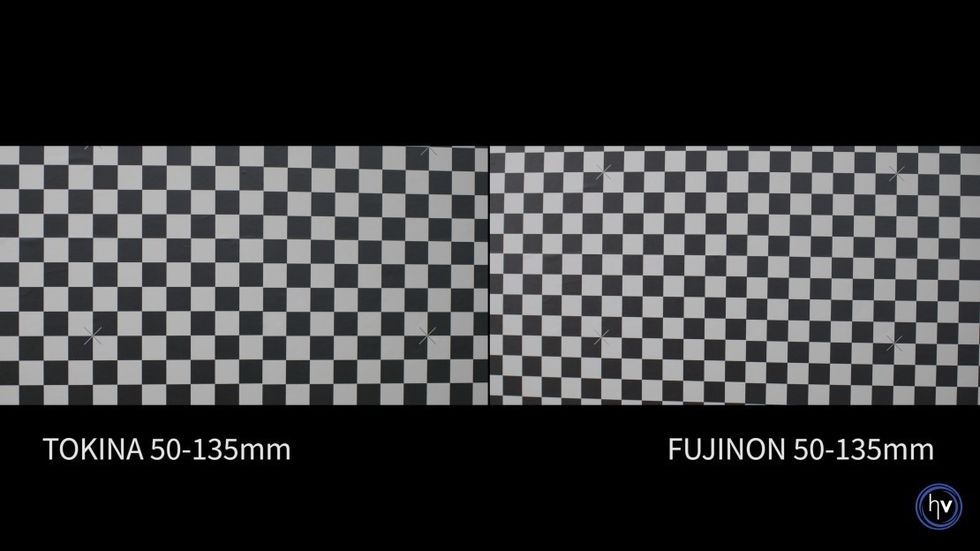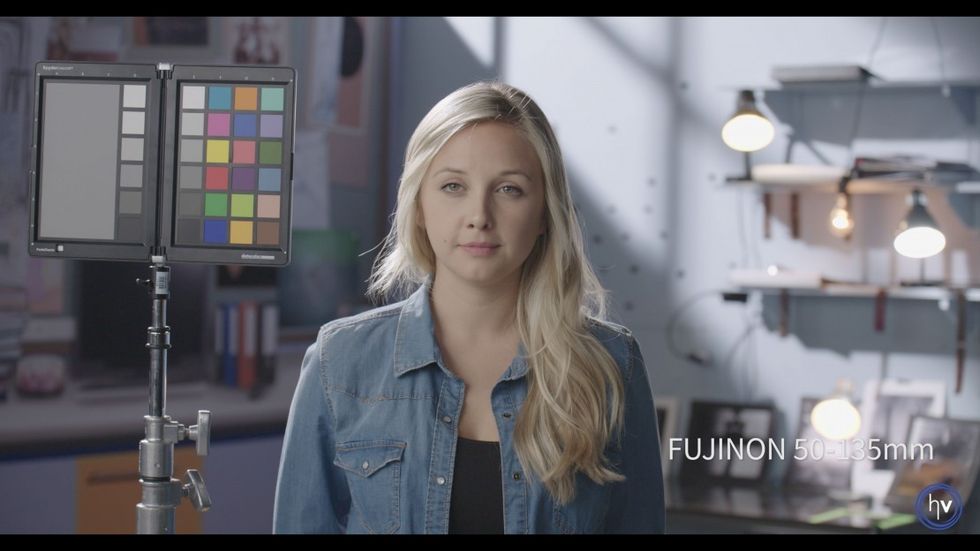Shootout: Fujinon vs. Tokina 50-135mm Zoom Lenses
Shane Hurlbut tests which of these affordable lenses comes out on top.

[Editor's Note: This article has been republished with permission from Shane Hurlbut, ASC's blog.]
In this zoom lens shootout, veteran shooter Shane Hurlbut reviews the brand new Fujinon MK 50-135mm E Mount Cinema Zoom against the Tokina Cinema 50-135mm PL Mount Cinema Zoom. Right now, these lenses are falling into that $3,200 - $4,000 price range, which make them extremely affordable, lightweight, and flexible for most shooters—something that has been missing in our market with all the advancements in affordable tools and tech.
Test conditions
So let’s set the stage with what we are doing and how we are doing it:
- A/B CAMERA: Sony PXW-FS7 Xdcam
- RESOLUTION: 4K
- KELVIN: 5500
- ISO: 1600
- LUT: SONY-EE-Slog3-LC709A.cube

The test
Fujinon MK50-135mm Long Lens
Now to kick things off, we are going to start with the Fujinon MK50-135mm Long Lens. Right off the bat, this lens is incredibly light and thin coming in at 2.16 lbs. It’s T2.9 and is only offered in Sony’s proprietary E-mount.


Tokina Cinema 50-135mm Long Lens
Now let’s move onto the Tokina Cinema 50-135mm Long Lens. Unlike the ultra-lightweight Fujinon, this lens comes in 3.4 lbs, which isn’t too much of a difference, but it does add up in the long run. The build for this one isn’t so thin, it’s more stout and thick, something closer to a traditional prime lens.

Focus and distortion
When zooming in and out on both the Fujinon and Tokina, they maintain critical focus on all focal lengths. This is essential when applied to productions and quickly changing focal lengths. You don’t want to have to refocus between takes.


The Tokina lens has a little bit of distortion, but nothing as pronounced as the Fujinon lens. The Tokina lens has a flatter feel and will ultimately give you that flatter image. The Tokina produces a broader image which will render bigger facial features, whereas the Fujinon will render a narrower image with narrower facial features.

Lens flare
Now let’s see how the lens glass and elements react when flared. We are going to take a K5600 200w Joker and shoot it right across the glass and down the barrel of the lens. Both lenses present a really nice flare. The Fujinon seems to have more of a green, orange, and blue flare of the image. With the Tokina, we are getting more purplish-green into cyan tones with the flares. The flares overall are much bigger with the Tokina vs. the Fujinon. This is due to the lens being a bigger piece of glass.


Color rendition
Let’s break down the color rendition of these lenses. With the Fujinon, we get very neutral color tonality with a slight magenta cast. It handles the highlights very well with some nice contrast and color separation. Looking at the Tokina, the lens seems to have more of a green color tonality. It’s definitely a bit cool, and not as contrasty as the Fujinon glass. It doesn’t have the same snap. The Fujinon is a much sharper lens and the Tokina is a bit softer. What I can see is that there is a little bit better highlight control in the hair. Overall, the Fujinon for the dollar is doing really well!


Perspective
When it comes to perspective, the Fujinon really pushes the background away from our subject. The image doesn’t feel compressed and has more of a 3D quality to it. Something that reminds me of Cooke glass and how dimensional it is. Looking at the Tokina lens, it feels a lot more flat and compressed. You can feel the wall creeping up behind her and how flattened it is. At times you might want the glass to be this way, but it’s nice to have that separation from your background.

Conclusion
Bottom line is that both of these lenses are very affordable and come ready to play. If you are looking for a sharper and more contrasty lens, go with the Fujinon MK50-135mm. It offers up a narrower perspective with some distortion that helps to push the background away for a more 3D look. It also has a very neutral color rendition which is quite pleasant. If you are looking for a softer, less contrasty lens, that has a much flatter field with less distortion that brings the background in towards the subject, then go with the Tokina Cinema 50-135mm lens. This could aid when trying to go for more of a period piece look. This lens also offers more of a professional build for both the operator and the assistant.
Equipment used in this test
- Fujinon MK50-135mm T2.9 E Mount
- Tokina Cinema 50-135mm T3.0 PL Mount
- Tokina Cinema 50-135mm T3.0 EF Mount
- Sony PXW-FS7 XDCAM Super 35 Camera System
- Sony PXW-FS7M2 XDCAM Super 35 Camera System
- RED Weapon Woven CF 6K Brain
- Blueshape BV90 Battery
- Teradek Bolt Pro 3000 3G-SDI/HDMI Wireless Video Transceiver Set
- Sekonic c-700 Color Meter
- Sekonic LiteMaster Pro L-478DR-U Light Meter
- Datacolor SpyderCHECKR
To learn more about the gear used in this test, visit Shane Hurlbut's blog.


 "'Back Home"via Mercedes Arutro
"'Back Home"via Mercedes Arutro 'Back Home'via Mercedes Arutro
'Back Home'via Mercedes Arutro 









